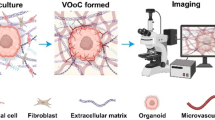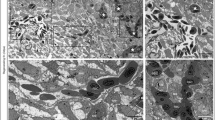Abstract
Glioma is a highly aggressive form of brain cancer, with some subtypes having 5-year survival rates of less than 5%. Tumour cell invasion into the surrounding parenchyma seems to be the primary driver of these poor outcomes, as most gliomas recur within 2 cm of the original surgically-resected tumour. Many current approaches to the development of anticancer therapy attempt to target genetic weaknesses in a particular cancer, but may not take into account the microenvironment experienced by a tumour and the patient-specific genetic differences in susceptibility to treatment. Here we demonstrate the use of complementary approaches, 3D bioprinting and scaffold-free 3D tissue culture, to examine the invasion of glioma cells into neural-like tissue with 3D confocal microscopy. We found that, while both approaches were successful, the use of 3D tissue culture for organoid development offers the advantage of broad accessibility. As a proof-of-concept of our approach, we developed a system in which we could model the invasion of human glioma cells into mouse neural progenitor cell-derived spheroids. We show that we can follow invasion of human tumour cells using cell-tracking dyes and 3D laser scanning confocal microscopy, both in real time and in fixed samples. We validated these results using conventional cryosectioning. Our scaffold-free 3D approach has broad applicability, as we were easily able to examine invasion using different neural progenitor cell lines, thus mimicking differences that might be observed in patient brain tissue. These results, once applied to iPSC-derived cerebral organoids that incorporate the somatic genetic variability of patients, offer the promise of truly personalized treatments for brain cancer.





Similar content being viewed by others
Abbreviations
- Cx43:
-
connexin43
- GFAP:
-
glial fibrillary acidic protein
- DAPI:
-
4′-6-diamidino-2-phenylindole
- iPSC:
-
induced pluripotent stem cell
References
Abud EM et al. (2017) iPSC-derived human microglia-like cells to study neurological diseases. Neuron 94:278–293 e279
Aftab Q, Sin WC, Naus CC (2015) Reduction in gap junction intercellular communication promotes glioma migration. Oncotarget 6:11447–11464
Ahlenius H, Kokaia Z (2010) Isolation and generation of neurosphere cultures from embryonic and adult mouse brain. In: Ward A, Tosh D (eds) Mouse Cell Culture. Methods in Molecular Biology (Methods and Protocols). Humana Press, New York, pp 241–252
Boulay AC, Cisternino S, Cohen-Salmon M (2016) Immunoregulation at the gliovascular unit in the healthy brain: A focus on Connexin 43. Brain Behav Immun 56:1–9
Carter H, Marty R, Hofree M, Gross AM, Jensen J, Fisch KM, Wu X, DeBoever C, Van Nostrand EL, Song Y, Wheeler E, Kreisberg JF, Lippman SM, Yeo GW, Gutkind JS, Ideker T (2017) Interaction landscape of inherited polymorphisms with somatic events in cancer. Cancer Discov 7:410–423
Charles NA, Holland EC, Gilbertson R, Glass R, Kettenmann H (2011) The brain tumor microenvironment. Glia 59:1169–1180
Colombo E, Farina C (2016) Astrocytes: key regulators of neuroinflammation. Trends Immunol 37:608–620
Cunningham C (2013) Microglia and neurodegeneration: the role of systemic inflammation. Glia 61:71–90
Dai X, Ma C, Lan Q, Xu T (2016) 3D bioprinted glioma stem cells for brain tumor model and applications of drug susceptibility. Biofabrication 8:045005
Eng C, Leone G, Orloff MS, Ostrowski MC (2009) Genomic alterations in tumor stroma. Cancer Res 69:6759–6764
Ezan P, Andre P, Cisternino S, Saubamea B, Boulay AC, Doutremer S, Thomas MA, Quenech'du N, Giaume C, Cohen-Salmon M (2012) Deletion of astroglial connexins weakens the blood-brain barrier. J Cereb Blood Flow Metab
Fawcett JW, Asher RA (1999) The glial scar and central nervous system repair. Brain Res Bull 49:377–391
Ginhoux F, Greter M, Leboeuf M, Nandi S, See P, Gokhan S, Mehler MF, Conway SJ, Ng LG, Stanley ER, Samokhvalov IM, Merad M (2010) Fate mapping analysis reveals that adult microglia derive from primitive macrophages. Science 330:841–845
Goodenberger ML, Jenkins RB (2012) Genetics of adult glioma. Cancer Genet 205:613–621
Hochberg FH, Pruitt A (1980) Assumptions in the radiotherapy of glioblastoma. Neurology 30:907–911
Kizawa H, Nagao E, Shimamura M, Zhang G, Torii H (2017) Scaffold-free 3D bio-printed human liver tissue stably maintains metabolic functions useful for drug discovery. Biochem Biophys Rep 10:186–191
Knowlton S, Anand S, Shah T, Tasoglu S (2018) Bioprinting for neural tissue engineering. Trends Neurosci 41:31–46
Kolesky DB, Homan KA, Skylar-Scott MA, Lewis JA (2016) Three-dimensional bioprinting of thick vascularized tissues. Proc Natl Acad Sci U S A 113:3179–3184
Krencik R, Seo K, van Asperen JV, Basu N, Cvetkovic C, Barlas S, Chen R, Ludwig C, Wang C, Ward ME, Gan L, Horner PJ, Rowitch DH, Ullian EM (2017) Systematic three-dimensional coculture rapidly recapitulates interactions between human neurons and astrocytes. Stem Cell Rep 9:1745–1753
Lancaster MA, Knoblich JA (2014) Generation of cerebral organoids from human pluripotent stem cells. Nat Protoc 9:2329–2340
Lee J, Borboa AK, Baird A, Eliceiri BP (2011) Non-invasive quantification of brain tumor-induced astrogliosis. BMC Neurosci 12:9
McMillin DW, Negri JM, Mitsiades CS (2013) The role of tumour-stromal interactions in modifying drug response: challenges and opportunities. Nat Rev Drug Discov 12:217–228
Moldovan L, Barnard A, Gil CH, Lin Y, Grant MB, Yoder MC, Prasain N, Moldovan NI (2017) iPSC-derived vascular cell spheroids as building blocks for scaffold-free biofabrication. Biotechnol J 12, in press.
Muffat J, Li Y, Yuan B, Mitalipova M, Omer A, Corcoran S, Bakiasi G, Tsai LH, Aubourg P, Ransohoff RM, Jaenisch R (2016) Efficient derivation of microglia-like cells from human pluripotent stem cells. Nat Med 22:1358–1367
Nevo I, Woolard K, Cam M, Li A, Webster JD, Kotliarov Y, Kim HS, Ahn S, Walling J, Kotliarova S, Belova G, Song H, Bailey R, Zhang W, Fine HA (2014) Identification of molecular pathways facilitating glioma cell invasion in situ. PLoS One 9:e111783
Pandya H, Shen MJ, Ichikawa DM, Sedlock AB, Choi Y, Johnson KR, Kim G, Brown MA, Elkahloun AG, Maric D, Sweeney CL, Gossa S, Malech HL, McGavern DB, Park JK (2017) Differentiation of human and murine induced pluripotent stem cells to microglia-like cells. Nat Neurosci 20:753–759
Pauli C et al (2017) Personalized in vitro and in vivo cancer models to guide Precision medicine. Cancer Discov 7:462–477
Pickup MW, Mouw JK, Weaver VM (2014) The extracellular matrix modulates the hallmarks of cancer. EMBO Rep 15:1243–1253
Quail DF, Joyce JA (2017) The microenvironmental landscape of brain tumors. Cancer Cell 31:326–341
Ridet JL, Malhotra SK, Privat A, Gage FH (1997) Reactive astrocytes: cellular and molecular cues to biological function. Trends Neurosci 20:570–577
Sin WC, Moniz DM, Ozog MA, Tyler JE, Numata M, Church J (2009) Regulation of early neurite morphogenesis by the Na+/H+ exchanger NHE1. J Neurosci 29:8946–8959
Sin WC, Aftab Q, Bechberger JF, Leung JH, Chen H, Naus CC (2016) Astrocytes promote glioma invasion via the gap junction protein connexin43. Oncogene 35:1504–1516
Sloan SA, Darmanis S, Huber N, Khan TA, Birey F, Caneda C, Reimer R, Quake SR, Barres BA, Pasca SP (2017) Human astrocyte maturation captured in 3D cerebral cortical spheroids derived from pluripotent stem cells. Neuron 95:779–790
Sofroniew MV (2009) Molecular dissection of reactive astrogliosis and glial scar formation. Trends Neurosci 32:638–647
Theodoric N, Bechberger JF, Naus CC, Sin WC (2012) Role of gap junction protein Connexin43 in astrogliosis induced by brain injury. PLoS One 7:e47311
Wakimoto H, Kesari S, Farrell CJ, Curry WT Jr, Zaupa C, Aghi M, Kuroda T, Stemmer-Rachamimov A, Shah K, Liu TC, Jeyaretna DS, Debasitis J, Pruszak J, Martuza RL, Rabkin SD (2009) Human glioblastoma-derived cancer stem cells: establishment of invasive glioma models and treatment with oncolytic herpes simplex virus vectors. Cancer Res 69:3472–3481
Wakimoto H, Mohapatra G, Kanai R, Curry WT Jr, Yip S, Nitta M, Patel AP, Barnard ZR, Stemmer-Rachamimov AO, Louis DN, Martuza RL, Rabkin SD (2012) Maintenance of primary tumor phenotype and genotype in glioblastoma stem cells. Neuro-Oncology 14:132–144
Acknowledgements
Part of this work was supported by a grant from Canadian Cancer Society (CCN, WCS). DvP was supported by the UBC Faculty of Medicine, the UBC Summer Student Research Program, and the Mach-Gaensslen Foundation. CCN holds a Canada Research Chair. We thank Dr. Hiroaki Wakimoto, Brain Tumor Research Center, Massachusetts General Hospital, for the kind gift of the GBM4 glioma stem cells. We thank John Bechberger for providing technical support for this project.
Author information
Authors and Affiliations
Corresponding author
Rights and permissions
About this article
Cite this article
van Pel, D.M., Harada, K., Song, D. et al. Modelling glioma invasion using 3D bioprinting and scaffold-free 3D culture. J. Cell Commun. Signal. 12, 723–730 (2018). https://doi.org/10.1007/s12079-018-0469-z
Received:
Accepted:
Published:
Issue Date:
DOI: https://doi.org/10.1007/s12079-018-0469-z




